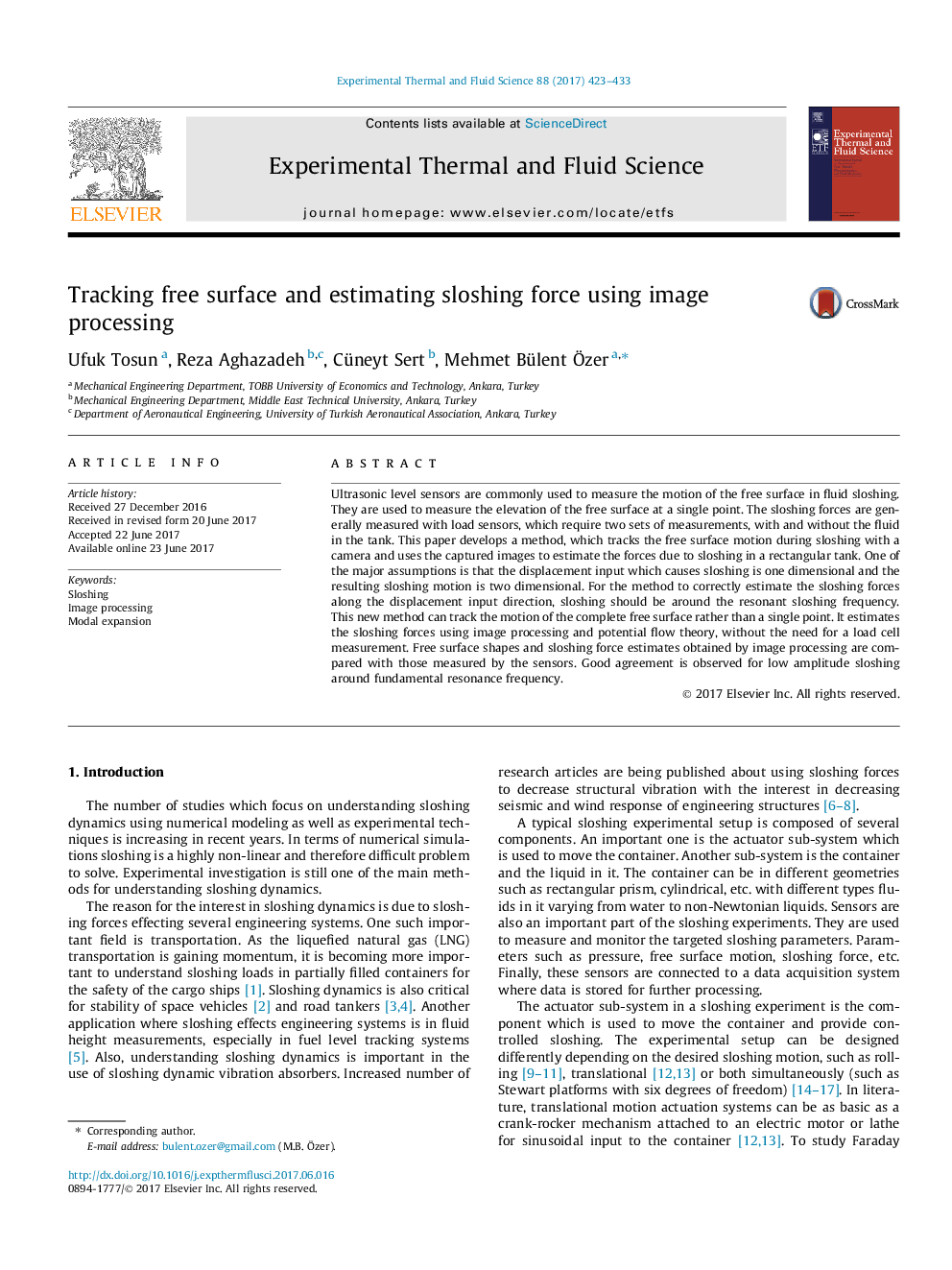ترجمه فارسی عنوان مقاله
ردیابی سطح آزاد و برآورد نیروی کشش با استفاده از پردازش تصویر
عنوان انگلیسی
Tracking free surface and estimating sloshing force using image processing
| کد مقاله | سال انتشار | تعداد صفحات مقاله انگلیسی |
|---|---|---|
| 152132 | 2017 | 11 صفحه PDF |
منبع

Publisher : Elsevier - Science Direct (الزویر - ساینس دایرکت)
Journal : Experimental Thermal and Fluid Science, Volume 88, November 2017, Pages 423-433
ترجمه چکیده
سنسورهای سطح التراسونیک معمولا برای اندازه گیری حرکت سطح آزاد در جریان سیال استفاده می شود. آنها برای اندازه گیری ارتفاع سطح آزاد در یک نقطه استفاده می شود. نیروهای بارگذاری به طور کلی با سنسورهای بار اندازه گیری می شوند که نیاز به دو مجموعه از اندازه گیری ها با و بدون مایع در مخزن دارند. این مقاله یک روش را ایجاد می کند که حرکت حرکت آزاد را در طول حرکت با یک دوربین انجام می دهد و از تصاویر گرفته شده برای تخمین نیروها به علت بارگذاری در مخزن مستطیلی استفاده می کند. یکی از مهمترین پیش فرضها این است که ورودی جابجایی که موجب برانگیختگی یک بعدی می شود و حرکت ناگهانی آن دو بعدی است. برای روش برای به درستی تخمین نیروهای بارگذاری در امتداد جهت ورودی جابجایی، جابجایی باید در اطراف فرکانس لغزون رزونانس باشد. این روش جدید می تواند حرکت کامل سطح آزاد را به جای یک نقطه انجام دهد. این برآوردها نیروهای اسلش را با استفاده از پردازش تصویر و نظریه جریان بالقوه بدون نیاز به اندازه گیری مقدار بار بار تخمین می زند. شکلهای سطح آزاد و برآورد نیروی کششی حاصل از پردازش تصویر با آنهایی که با سنسور اندازهگیری میشوند مقایسه میشود. توافق خوب برای دامنه کم در اطراف فرکانس رزونانس اساسی دیده می شود.

